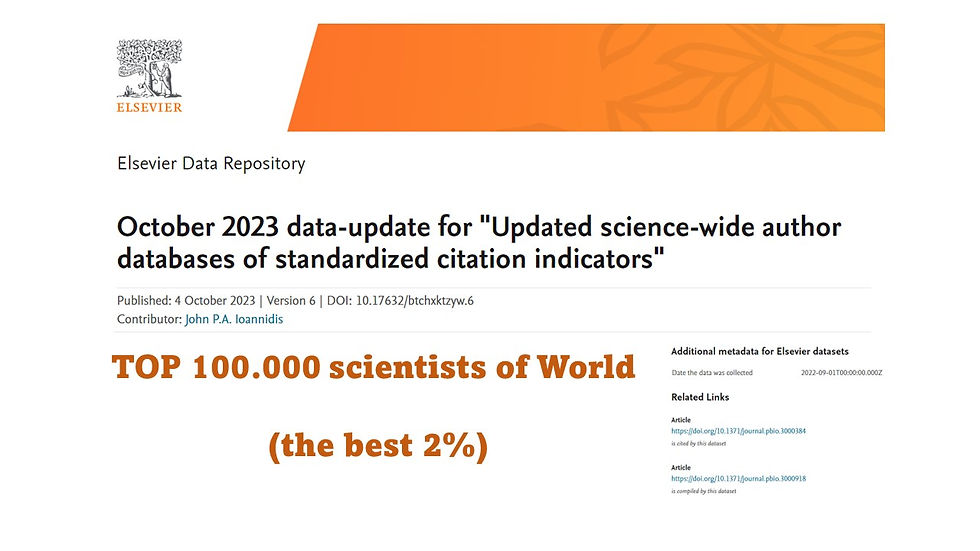Plant-Animal Interactions - Source of Biodiversity - New Book - listen the podcast!
- Kleber Del Claro

- 27 de abr. de 2021
- 6 min de leitura
Biotic interactions are ubiquitous and have shaped the evolution of Earth’s amazing
biodiversity. Undoubtedly, plant-animal interactions have structured the
majority of ecological networks and the biodiversity of interactions therein
through evolutionary time. From antagonisms to mutualisms, plant-animal interactions
are basic pieces of the evolutionary puzzle underpinning natural systems.
Comprehending these relationships in all of their multidisciplinary aspects is fundamental to the future of life on a planet where negative human interference in
natural systems is growing at an alarming pace.
Plant-Animal Interactions: Source of Biodiversity is a collaborative approach to
this huge challenge, offering researchers and students new views, without leaving
behind basic information. This book is an effort to pave the way for scientists interested
in improving our knowledge of how plant-animal interactions shape biodiversity.
Our book calls you to join us in studying and preserving plant-animal
interactions, because they are sources of biodiversity. The book covers the most
important theoretical aspects of this line of study, considering classical, basic, and
naturalistic knowledge, but also presents advanced and applied approaches. Thus,
in the opening chapter, we present a general view of plant-animal interactions. As
editors, we considered it important to provide the foundations of plant-animal
interactions from an evolutionary approach. A great deal of research in ecology
and evolution has examined chemical mediation of plant-animal interactions.
Thus, in 7 Chap. 2, Lee A. Dyer and Chris S. Jeffrey discuss classical studies
focused on plant compounds that reduce or deter insect damage (herbivory) and
directly or indirectly affect secondary consumers. Here, the authors present a new
view considering two focal theoretical frameworks that drive investigations of
chemically mediated interactions, with a focus on phytochemical mixtures: coevolution
and trophic interaction theory. This approach enables us to proceed to the
field of herbivory with Robert J. Marquis and Renan F. Moura, who, in 7 Chap. 3,
discuss traits that enable plants to escape from their herbivores but have not been
formerly considered part of plant resistance theory. They will brilliantly convince
you that escape from herbivores can be used to effectively reduce herbivore pressure
in agricultural systems, and that escape also contributes to biodiversity maintenance
in preserved ecosystems. This chapter presents a full new perspective on
the antagonistic relationships between plants and animals. However, to understand
how plant defense against herbivory evolves, it is necessary to characterize the
genetic underpinnings of resistance traits, quantify genetic variation in defense
trait production, and characterize how natural selection is acting on these traits.
We thank Liza M. Holeski for giving us 7 Chap. 4, an amazing review of the
genetic basis of plant-herbivore
interactions and the evolutionary and ecological
genetics of plant resistance against herbivory. Different aspects of defense against
herbivory were considered in the previous chapters, and 7 Chap. 5 continues this
by presenting the role of biotic defenses in plant-animal interactions. Biotic
defenses are relationships in which one organism (usually a plant or trophobiont
herbivore) attracts predators of its own enemies. In 7 Chap. 5, a team of young
biologists—Renan F. Moura, Eva Colberg, Estevão Alves-Silva, Isamara Mendes-
Silva, Roberth Fagundes, and Vanessa Stefani, joined by me (the old guy!)—deeply
discuss all types of biotic defense systems and their mechanisms. Full of examples
and exploring a very useful tool, experimental manipulation, this chapter illustrates
how conditional the outcomes of biotic interactions may be, and how we still
are in the infancy of these studies.
Starting with a holistic view of plant-animal interactions and their impact on
biodiversity, the first five chapters of this book present the chemical and genetic
aspects of plant-animal interactions and explore the most antagonistic relationships
among these organisms, herbivory, and defenses against herbivores. However,
recent reviews in plant-animal interactions suggest that mutualistic relationships
(positive results to interacting organisms) are probably the strongest forces generating
biodiversity. We will return to this issue later, after we present and competently
exemplify the two main mutualistic relationships between plants and animals:
pollination and seed dispersal. The following two chapters are very similar in structure,
starting by covering the natural history and basic aspects of the main animal
groups involved in these interactions, and then presenting new pathways for those
interested in these lines of research. In 7 Chap. 6, Helena Maura Torezan-Silingardi,
Ilse Silberbauer-Gottesberger, and Gerhard Gottesberger draw on their
backgrounds in pollination, and in 7 Chap. 7, Richard T. Corlett covers seed dispersal
and frugivory; these colleagues fulfilled the difficult mission of synthesizing
in each of these chapters issues worthy of a whole book. In both chapters the
authors go beyond characterizing and illustrating (with marvelous images) the
most important mutualistic plant-animal interactions, also alerting us to the drastic
problems caused by human impacts in natural systems. The reductions in populations
and diversity of pollinators and seed dispersers are contributing to an
enormous loss of ecological services, putting human food security at risk.
Plant belowground interactions with soil microbes alter plant fitness and physiology,
affecting the performance of plant-associated aboveground organisms.
Although this issue is clear to all biologists, especially field researchers, these
aspects have only been superficially explored in previous books related to the evolutionary
ecology of plant-animal interactions. So, we thank Frédérique Reverchon
and Alfonso Méndez-Bravo in 7 Chap. 8 for giving us a better understanding
of the ecological interactions occurring within the phytobiome and their impacts
on plant-animal interactions and associated biodiversity. This chapter opens up
discussion into the main examples of facilitation in plant-animal interactions, that
is, how these interactions can modify the environment by enlarging the niche for
opportunistic organisms. In 7 Chap. 9, an emerging group of very competent
young ecologists, headed by Eduardo S. Calixto, and Danilo F. B. dos Santos,
Diego V. Anjos, and Eva Colberg, discuss the concept of ecosystem engineering.
This chapter addresses the concepts, applications, biodiversity implications, and
future perspectives for the study of ecosystem engineers, especially regarding plantarthropod
interactions.
With these nine initial chapters, we are sure that the book provides all the
basic, updated, and useful knowledge, including new approaches, for anyone
interested in getting started in studying plant-animal interactions or settling previous
fundamental questions. In the final part we have four chapters that place
this book even further than the previous ones. In 7 Chap. 10, Pedro Luna and
Wesley Dáttilo start by explaining how interactive communities and populations
generate organized networks and how these ecological networks vary over space
and time. They close the chapter by calling attention to the importance of plantanimal
networks in understanding the mechanisms and processes driving the
geographic mosaic of coevolution, as proposed by John N. Thompson. This
chapter complements the initial chapter in considering the geographic mosaic of
coevolution theory as a key approach for understanding of origins and maintenance
of biodiversity of interactions. Next, Judith L. Bronstein in 7 Chap. 11
presents a new and very intriguing question in plant-animal interactions. She
starts by considering that mutualisms are not only present, but are common and
prominent interactions in every habitat on Earth. Thus, in a chapter full of wonderful
examples from pollination, biotic defenses, and other mutualisms, she proposes
an underlying rationale for why biological diversity tends to accumulate
around mutualisms. And is mutualism a source of evolutionary innovation?
7 Chap. 12, written by Rodrigo A. S. Pereira and Finn Kjellberg, explores this
question by presenting examples of mutualisms that allowed insects and/or
plants to expand their ecological niches. From a naturalistic up to a theoretical
view, this book illustrates how plant-animal interactions are sources of biodiversity.
However, in 7 Chap. 13, Kleber Del-Claro and Rodolfo Dirzo close the
book with a very disturbing topic. They discuss how in the Anthropocene, due to
defaunation and deforestation, human interference in the structure of ecological
networks may be forcing mass, global disruptions of ecological interactions,
potentially leading to the end of the biodiversity of interactions.
All books have a singular history. Plant-Animal Interactions: Source of Biodiversity
has a history mediated by a worldwide crisis, the SARS-CoV-2 or COVID-19
or simply the coronavirus pandemic. In normal times it is not easy to edit or to
write a book or a book chapter. In a year of restrictions, suffering, loss of loved
ones, a time when life was turned upside down, working was even harder. We thank
each one of our authors for all of your dedication, resilience, and love of science.
We know how difficult it was. Some of us have been closed in at home during all
this time. Some of us lost loved ones and friends. One has a new baby (a piece of
good news!). One retired and had to move to a new city during the pandemic crisis.
One was forced to quarantine in a hotel room for 2 weeks. One housed the entire
family of a colleague during the fires in California. We are sincerely thankful to you
all.
We, in name of the whole group, thank our financial agencies, universities and
employers. We sincerely thank our editor João Pildervasser and the marvelous
Springer Nature team of collaborators.
Our very special acknowledgement goes to Ms. Eva Colberg for kindly revising
the English of 7 Chaps. 1, 5, 6, 9, and 10. There are no words to thank her collaboration.
We also thank our families for their support and patience. We thank each mutualistic
organism living inside our bodies and cells for our lives, and plants and
animals for their interactions that become this still wonderful world.
Kleber Del-Claro
Helena Maura Torezan-Silingardi
Uberlândia, MG, Brazil






cm mining cm mining
cpspai cpspai
cpspai cpspai
paxmining paxmining
paxmining paxmining
golden mining golden mining
ri mining ri mining
solmining solmining
cm mining cm mining
cm mining cm mining
cm mining cm mining
cm mining cm mining
cm mining cm mining
cm mining cm mining
cm mining cm mining
cm mining cm mining
cpspai cpspai
cpspai cpspai
paxmining paxmining
paxmining paxmining
golden mining golden mining
ri mining ri mining
solmining solmining
cm mining cm mining
cm mining cm mining
cm mining cm mining
cm mining cm mining
cm mining cm mining
cm mining cm mining
cm mining cm mining
cm mining cm mining
cpspai cpspai
cpspai cpspai
paxmining paxmining
paxmining paxmining
golden mining golden mining
ri mining ri mining
solmining solmining
cm mining cm mining
cm mining cm mining
cm mining cm mining
cm mining cm mining
cm mining cm mining
cm mining cm mining
cm mining cm mining
cm mining cm mining
cpspai cpspai
cpspai cpspai
paxmining paxmining
paxmining paxmining
golden mining golden mining
ri mining ri mining
solmining solmining
cm mining cm mining
cm mining cm mining
cm mining cm mining
cm mining cm mining
cm mining cm mining
cm mining cm mining
cm mining cm mining
cm mining cm mining
cpspai cpspai
cpspai cpspai
paxmining paxmining
paxmining paxmining
golden mining golden mining
ri mining ri mining
solmining solmining
cm mining cm mining
cm mining cm mining
cm mining cm mining
cm mining cm mining
cm mining cm mining
cm mining cm mining
cm mining cm mining